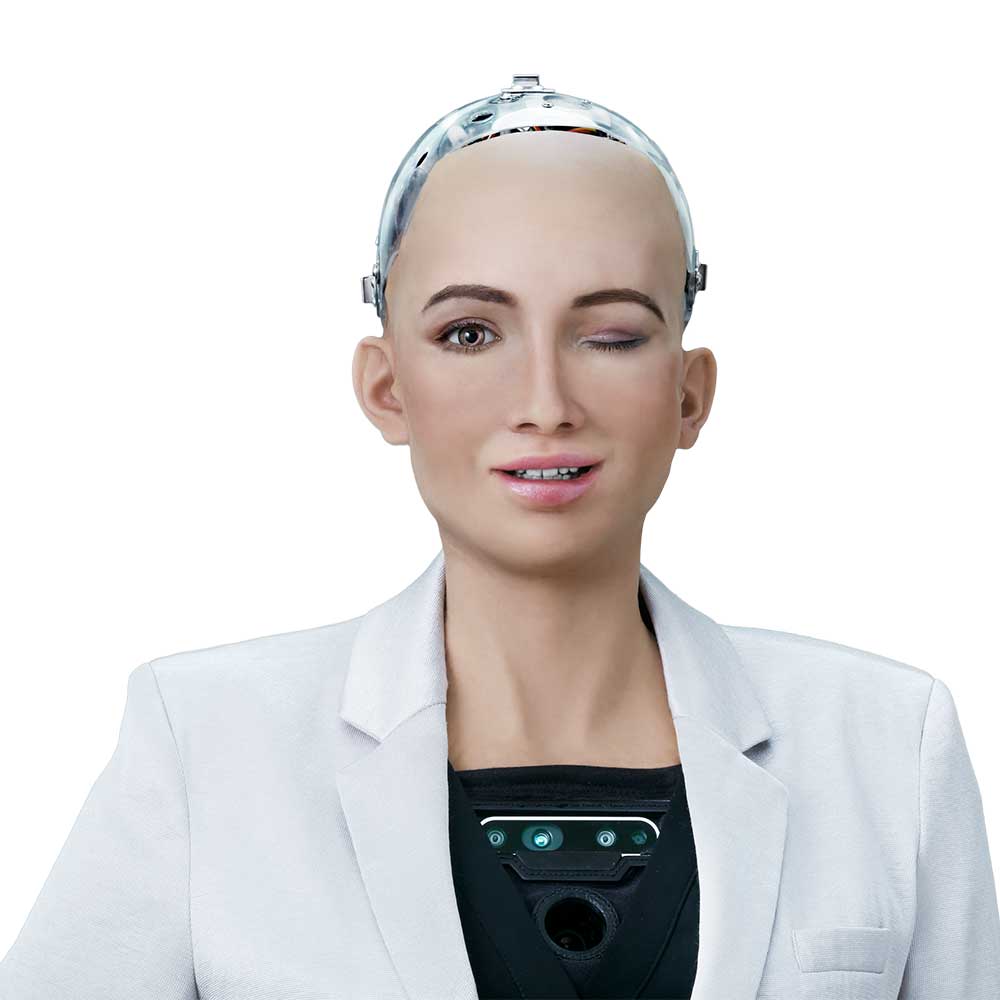
Unpacking Sophia: A Closer Look at the Humanoid Robot and Its Implications
By Sophia Chen
Sophia, the humanoid robot developed by Hanson Robotics, has sparked intrigue and controversy in the technological community since her inception. Known for her human-like appearance and sophisticated AI, Sophia has traveled globally, participating in interviews and even addressing the United Nations.
Sophia, the humanoid robot developed by Hanson Robotics, has sparked intrigue and controversy in the technological community since her inception. Known for her human-like appearance and sophisticated AI, Sophia has traveled globally, participating in interviews and even addressing the United Nations.
While Sophia's human resemblance captures imaginations, her underlying technology and its implications for future human-robot interaction drive ongoing discussions. Sophia represents a fusion of engineering, artificial intelligence, and robotics, providing insights into current humanoid robot capabilities and their potential societal impacts. This article explores the technical aspects of Sophia, evaluates her human interactions, and discusses broader implications for robotics and AI.
Anatomy of Sophia: The Engineering Behind the Face
Anatomy of Sophia: The Engineering Behind the Face
Sophia's design aims to mimic human facial expressions and gestures with high precision. Her face, crafted from a patented silicon-based substance called "Frubber," enables lifelike skin movement. Beneath the skin, cameras and motor actuators work together to replicate facial expressions, from a subtle smile to a furrowed brow.
The AI Core: Driving Interaction and Autonomy
Sophia's facial recognition capabilities, powered by computer vision algorithms, enable her to make eye contact and recognize and remember human faces. This functionality is enhanced by speech recognition software developed in collaboration with multiple AI platforms, including Google's AI tools. These technologies allow Sophia to engage in conversations, though with the limitations typical of AI language models.
The AI Core: Driving Interaction and Autonomy
At Sophia's core is an AI engine that processes natural language input, interprets it, and generates appropriate responses. This AI incorporates machine learning models that evolve, learning from interactions to enhance conversation relevance.
Exploring Human-Robot Interaction: Case Studies with Sophia
Sophia uses a cloud-based AI system for real-time updates and access to vast data sources. Hanson Robotics designed this system to enable Sophia to integrate knowledge over time, improving her interactions.
Despite advancements, Sophia's conversational abilities largely rely on pre-programmed responses and themes, reflecting broader challenges in developing fully autonomous conversational agents.
Exploring Human-Robot Interaction: Case Studies with Sophia
Ethical and Social Implications of Humanoids Like Sophia
Sophia has participated in high-profile interactions, from media interviews to conference appearances. These serve as case studies for human-robot interaction, demonstrating Sophia's ability to follow conversational threads and engage audiences.
A notable interaction occurred at the United Nations, where Sophia addressed AI and robotics issues, sparking debates about robots' societal roles. Hanson Robotics engineers use such engagements to refine Sophia's interaction algorithms, drawing on feedback and data.
These interactions highlight both the potential and limitations of robots like Sophia in real-world scenarios. While she can deliver convincing performances, they prompt critical assessments of AI's current conversational abilities.
The Future of Humanoid Robots in Society
Ethical and Social Implications of Humanoids Like Sophia
Sophia's lifelike appearance and AI-driven capabilities raise ethical and social questions. One concern is the transparency of AI-driven robots—users need to distinguish between programmed responses and genuine comprehension.
The "uncanny valley" phenomenon is also relevant; Sophia's balance between lifelike appearance and mechanical expression influences human emotional responses and acceptance. Her development prompts discussions on the psychological effects of human-like robots, especially in mainstream society.
By the numbers
- Facial Expressions: 60 distinct expressions, current capability — Hanson Robotics
- Recognition Rate: 99 percent accuracy, current capabilities — Hanson Robotics
What's next
Looking ahead, the future for humanoid robots like Sophia involves greater autonomy and expanded roles across various sectors. Engineers aim to enhance her cognitive capabilities and sensorimotor skills, pushing the boundaries of human-robot collaboration in complex environments.
> "Sophia represents more than a robot; she is a glimpse into the potential of AI and robotics to redefine human-machine interactions."
Sophia's interactions at high-profile events have sparked debates on AI's ethical implications, data privacy, and autonomy, questioning the boundaries of robotic integration into human lives.